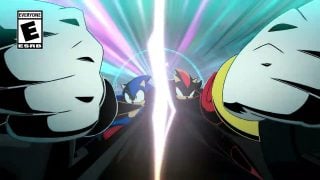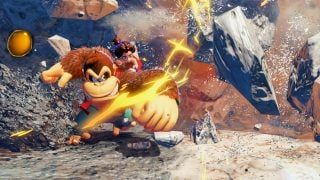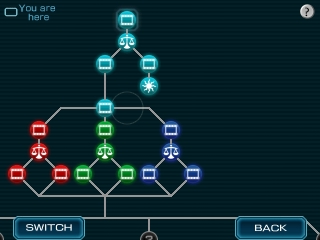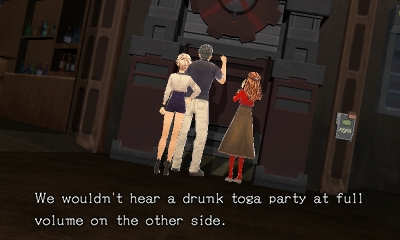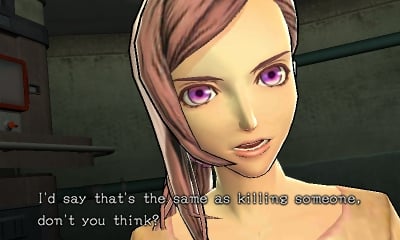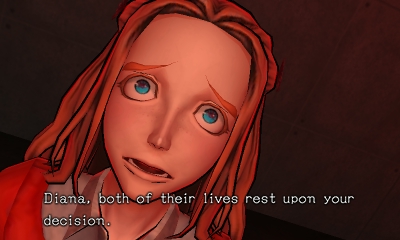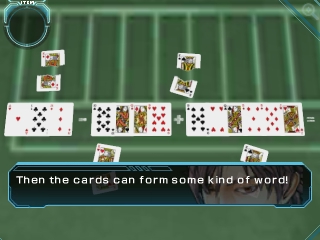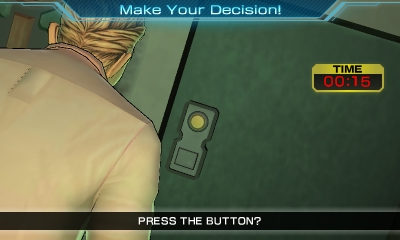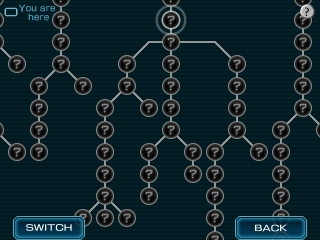When one thinks of games that use the medium to express themselves in a way that no other media can, few can match up to the creativity of the Zero Escape series. Starting with 2009’s Nine Hours, Nine Persons, Nine Doors, director Kotaro Uchikoshi created a thriller-adventure hybrid with shades of Saw that took a truly unique approach to the medium, garnering critical accolades in the process. He followed it up with 2012’s Virtue’s Last Reward, which added voice acting, more endings, and a beefier experience in general, and won even more praise for its innovative methods. But, due to low sales in its home country, it was unknown whether the trilogy would ever be completed…
Fortunately, the final entry in the series has at last arrived. Tying up all (well, most) of the loose threads that VLR left behind, Zero Time Dilemma concludes the trilogy in trademark fashion, with only a couple of noticeable hiccups along the way.
All returns to Zero
Zero Time Dilemma picks up right where Virtue’s Last Reward ended… er, sort of. An enigmatic man known as Zero – adorned with fancy cane, silk hat, and ancient medical mask – has trapped nine people within a shelter, forcing them to play something known as “The Decision Game.” Essentially, in order to escape with their lives, at least six of the participants must die. And, as always seems to happen in this sort of situation, the fate of the world rests on who escapes, who lives, and who dies.
Zero Escape fans will note the similarities to the previous two entries’ premises (I’m actually surprised they didn’t call it the Nonary Game this time around too). Much like 999 and VLR, the game is quite story heavy, though unlike those two games ZTD takes a much less linear approach to its storytelling, jumping around via various “fragments” to different characters and points in times much more frequently.
Scenes are generally split between three teams – C-Team, Q-Team, and D-Team, each consisting of three people – as they solve puzzles, discuss things among themselves, and try to unravel the mysteries at hand. Players will hop from team to team as they learn information about the characters, setting, and plot, piecing together bits of info as they go along.
The characters, in true Zero Escape fashion, are all interesting or fascinating in their own right, holding secrets and problems that may be difficult to discern at first. While more than a few familiar faces fill the cast, there’s also plenty of fresh blood to fill the ranks, creating a fairly well rounded cast of characters. And, in accordance with Zero Escape tradition, expect insane plot twists, medium awareness, and enough pseudoscience to make you adopt a tinfoil hat. It’s all part of the wonderfully bonkers charm the series holds, and I’m happy to say that the game continues the practices of the former two.
If there was one significant complaint about the plot (besides the ending, which I’ll touch upon later), it’s the lack of accessibility to newcomers. While there are some early exposition dumps to catch fresh faces up to speed, they still might be confusing to new players, and the game has no qualms about spoiling certain parts of previous games. As a result, you should definitely play 999 and VLR before this game, if you want a full appreciation of what’s going on.
Shades of gray
The most striking difference that Zero Time Dilemma brings to the table compared to its predecessors is in the way it presents itself. While the game is still a mix of adventure game and visual novel, the visual novel portions (the meat of the experience) now take on a more cinematic quality, with different perspectives, camera angles, and settings. No longer confined to a medium-sized pool of pre-determined poses, characters now have animations and more film-like presence. While these animations can look a bit awkward and stilted sometimes, it’s ultimately not particularly better or worse than what Virtue’s Last Reward offered – just different.
Atmospherically, the game takes on more of a dark, gritty tone compared to the previous entries. The previous games had their share of murky environments, but the level of shadiness is kicked up a notch sometimes, helped by some ambient sound effects. While the lighting effects won’t blow you away, the environments are good at conveying the game’s dreary tone.
The graphical style is a bit different from VLR, too – though it strikes a bigger contrast with 999. While still clearly anime-influenced, Spike Chunsoft has taken the better engine to give the characters more lifelike qualities than in previous titles. While this occasionally does fall into the uncanny valley, this also serves to enhance the horror aspects of the game in turn, making character deaths and actions all the more horrifying.
While the music isn’t too much to write home about (though there are a couple stand out tracks) given that large portions are remixes of songs from the previous game, the voice acting – just as in VLR – is absolutely stellar. Despite the occasionally shaky performance here and there, an all star list of voice actors, coupled with excellent direction and writing, really helps to bring the characters to life, and more than makes up for the rocky animations. The game even includes dual-audio options, and the Japanese cast is just as great as the English one, featuring great talent across the board (including my personal favorite Japanese VA, Tomokazu Sugita). The best casting choice, however, has to fall to D.C. Douglas, who seems completely in his element voicing [REDACTED].
Piecing it all together
Gameplay in ZTD, as previously mentioned, splits into visual novel and adventure/escape room sections. Visual novel sections are fairly straightforward, showing dialogue between the player and then often a choice (more on that in a moment). Adventure sections are exactly the same as the last game, being “escape the room” type situations where you must search your surroundings for a way to unlock the exit door (or occasionally another objective).
The puzzles within ZTD are just as interesting and innovative as the previous entries – perhaps even more so, due to the more dynamic engine. Solving them requires careful scanning of the environment, studious note taking, and quite a bit of brain power. While the Easy/Hard difficulties of VLR have been dropped, it’s not a great loss – these puzzles are tough, requiring you to bust out pen and paper in some instances. And, with one or two infuriating exceptions, the puzzles are pretty fair too, not taxing or strenuous, and giving off an immense feeling of accomplishment upon completion. Though, as mentioned, some made me drive my head up the wall (looking at you, Biolab!)
The more interesting and thematic portions of the game come in the decisions you make – the in-universe contest is called “The Decision Game”, after all. The breadth of choices and situations you have to make vary from “heads or tails” to “play Russian Roulette with a friend’s skull”, and just about everything in between. Sometimes, the decisions themselves are puzzles, ones that may require information from other routes to solve. These decisions may kill characters en masse, unlock other paths, or even end the game outright, depending on what you choose. In fact, it’s technically possible to end the game five minutes after it begins. But no matter what, you can always go back and change how things resolve.
The results of these decisions is really where Zero Time Dilemma shines. The game fully lets the player knows that the consequences of these actions are done by the player’s hand, and doesn’t shy away from showing him/her a scene that may be grizzly. If you get someone killed, it’s not going to be a nice, clean discretion shot – you’re going to view their bullet-riddled corpse, or slit throat gushing blood, or even worse. This is NOT a game for the faint of heart – some parts made my normally iron stomach want to reject its contents onto the floor. And I had to live with the fact that I had no one to blame for some of the results but myself. All of this serves to make the player seriously consider their decision, and be fully aware of their power and consequences, no matter how easily they might be reversed.
One small nitpick, about the game on 3DS in particular – lack of functionality. There’s no 3D for the game, which is honestly fine (even though VLR had it), but what’s more disappointing is the lack of dual screen functions. VLR allowed separate screens for note-taking/checking and gameplay, which made puzzle solving fluid and fun, but ZTD – as it was developed in conjunction with PC and Vita – doesn’t have the feature, which made me bust out physical paper more often than the game’s memo function. Not a huge loss, but it did make me feel a bit miffed.
Just like VLR, Zero Time Dilemma has a huge pool of endings – the majority of which are “bad” game overs. Unlike VLR, it’s a bit more difficult to determine where exactly these bad endings are, but a number of them are interesting in their own right (my favorite, by far, was the Button one.) Generally, the non-bad endings provide markers of progress, as well as keys for unlocking other paths within the game. Though, due to the nonlinear nature of the narrative, your path to the “true end” may be a sporadic one.
This is a potential failing of the game, though one I didn’t run into myself – the fact that you may see the resolution to a plot point before seeing its setup. While certain fragments are locked until you clear other parts of the game, other segments, depending on how you play them, may end up revealing certain plot points in a context where you don’t fully understand them yet. While this is sometimes intentional, there are also points where it may pose a problem, and a realization sets in later that you might have wanted to play things in a different order. Again, it didn’t really happen personally, but looking at which fragments unlock when, it’s easy to see how it might happen.
Final fracture
While most of my complaints against the game are rather nitpicky, there was one part I had particular issue with: the game’s ending. While the path up to it is appropriately trippy and will screw with your brain, the actual climax is a little lackluster, and the resolution leaves a lot to be desired. Certain issues from VLR are left unexplored, parts of the epilogue are left in text files, and game’s final film shot is left ambiguous… which, in a title so focused on hard choice and seeing multiple results, feels a little cheap. Not to mention that the game is about half as long (20 hours) as Virtue’s Last Reward (35 hours), which, while certainly not short, isn’t as full as its predecessors (the lack of room puzzles in the final stretch only makes it feel shorter).
While this is all disappointing, it ultimately doesn’t feel like Uchikoshi’s fault. It’s clear that the game was on a tight budget in several respects, and I have no doubt that if he received the funding and resources necessary to fully realize his vision, the ending would be much more satisfying. Would it be a perfect resolution that solved every dangling plot thread? Maybe not, but I’m sure there would be a fuller experience.
Ultimately, I think that sums up my feelings on Zero Time Dilemma as a whole. It’s more than satisfactory for what it is, but you can feel its monetary limitations throughout. Not everybody can be a multi-million AAA developer who can purchase whatever assets they’d like, and for what Zero Time Dilemma had, it certainly made the most of it. It just makes me wonder what might have been.
Overall, while not reaching the potential it may have had, Zero Time Dilemma serves as a fine send-off to the series, carrying the Zero Escape spirit throughout. While it has its shortcomings – mostly due to not having all the resources it may have required – the strong writing, plot, and general insanity make it a trip not worth missing. The entire series is one of the most unique I’ve seen across the entire medium, and I certainly hope more take after it.
Leave a Comment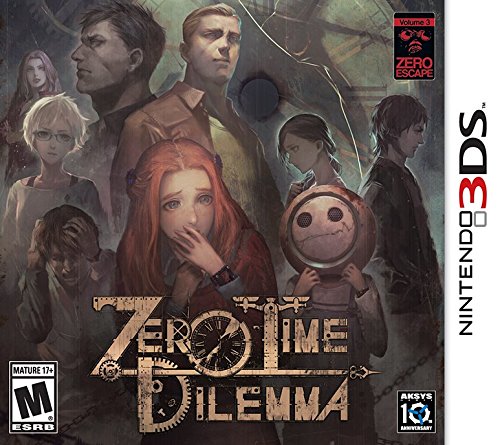
System: Nintendo 3DS
Release date: June 28, 2016
Categories: Adventure
Publisher: Aksys Games
Developer: Chime
